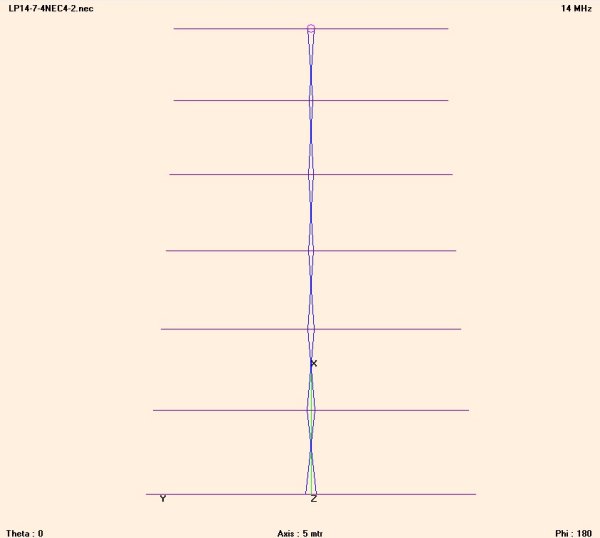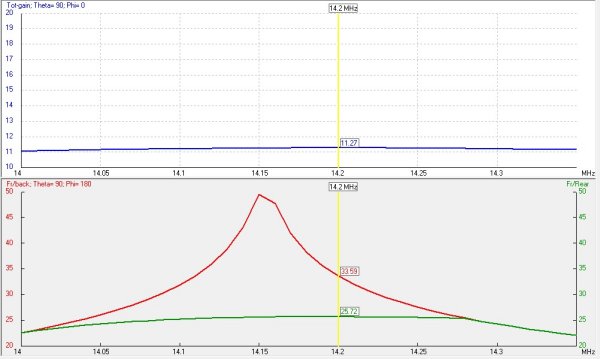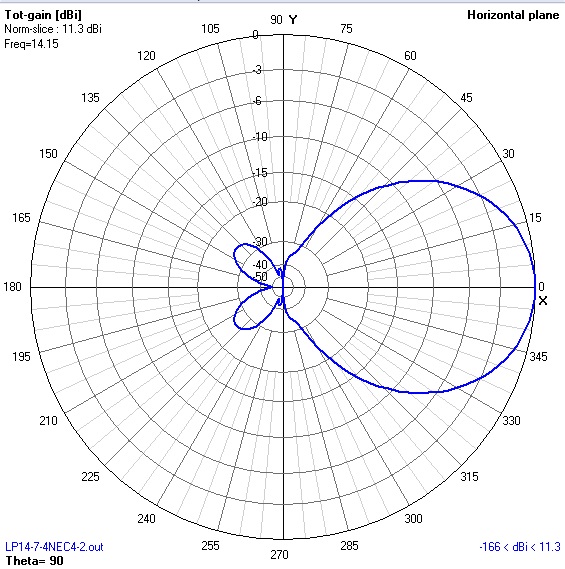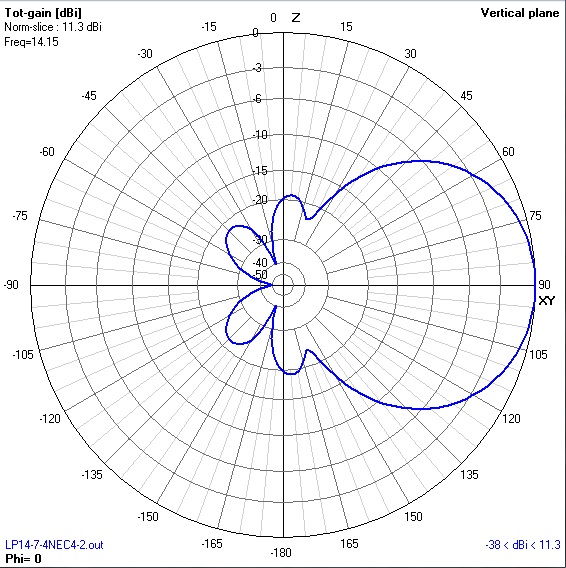
The W8IO
Antenna Site -
Optimized LPDA
(14 March 2022)
Russia
began a full-scale invasion of Ukraine on 24 February 2022, in an
escalation of the Russo-Ukrainian War that began in 2014. The invasion
is the largest conventional military attack on a sovereign state in
Europe since World War II. Since the beginning of Putin's war,
thousands of both Ukraine and Russian citizens have been killed.
Russian military have indiscriminately bombed cities in Ukraine,
destroying many hospitals and schools. Our heart goes out to the 2.7
million plus
refugees that have left Ukraine for neighboring countries, and those
who stayed to fight the Russian invaders.
Rossiya nachala polnomasshtabnoye vtorzheniye v Ukrainu 24 fevralya 2022 goda v ramkakh eskalatsii rossiysko-ukrainskoy voyny, nachavsheysya v 2014 godu. Eto vtorzheniye
yavlyayetsya krupneyshim voyennym napadeniyem s primeneniyem obychnykh vooruzheniy na suverennoye gosudarstvo v Yevrope so vremen Vtoroy mirovoy voyny. S nachala putinskoy
voyny pogibli tysyachi grazhdan Ukrainy i Rossii. Rossiyskiye voyennyye bez razbora bombili goroda Ukrainy, unichtozhiv mnozhestvo bol'nits i shkol. My sochuvstvuyem boleye
chem 2,7 millionam bezhentsev, pokinuvshikh Ukrainu v sosedniye strany, i tem, kto ostalsya srazhat'sya s rossiyskimi okkupantami.
Россия начала полномасштабное вторжение в Украину 24 февраля 2022 года в рамках эскалации российско-украинской войны, начавшейся в 2014 году. Это вторжение является крупнейшим
военным нападением с применением обычных вооружений на суверенное государство в Европе со времен Второй мировой войны. С начала путинской войны погибли тысячи граждан Украины
и России. Российские военные без разбора бомбили города Украины, уничтожив множество больниц и школ. Мы сочувствуем более чем 2,7 миллионам беженцев, покинувших Украину в
соседние страны, и тем, кто остался сражаться с российскими оккупантами.
Optimized
LPDA for narrow band
This
project consists of an attempt to design a Narrow-Band Optimized
Log-Periodic Dipole Array which has the same or better
performance
characteristics (VSWR, Gain, Front-to-Back, Front-to-Rear, high G/T,
etc) as those of a similar boom-length monoband Yagi. I call
this
new type of antenna - NBO-LPDA.
Normally,
log-periodic dipole arrays are designed to cover a large frequency
range, such as 14 - 30 MHz or 50 - 200 MHz. LPDA's produce
moderate gain, moderate F/B and low VSWR over almost all frequencies
within the frequency range that they are designed for. They
are
similar in shape to Yagi beams, however, Yagis almost always have more
gain and more F/B within the band that they are designed for, compared
to a similar size LPDA which contains the band.
While evaluating some high-Tau LPDA designs in 2013,
I
found that I could obtain gain values within 1 dB of similar length
high performance VHF/UHF Yagis. These high-Tau designs also used a
Sigma value near optimum and produced extremely high gain and F/B and
F/R and extremely clean patterns in NEC simulations. Since the gain was
so close, I decided to inspect what parameters could be changed to
improve the gain on a specific frequency (e.g. 144.1 MHz) without
sacrificing too much F/B or F/R, or possibly improving the F/R along
with the gain. The display of current on each element suggested that
the longest 2 or 3 elements could be tweaked for slightly better F/R
without affecting the overall LPDA performance. Also the front elements
could also be tweaked to improve gain. The results of my
optimization were very encouraging. I now have several
optimized designs for both 144 and 432 MHz Amateur bands, and
I now
plan to build and test some of these to verify the real performance vs.
the NEC simulation. I will post more information here after this
verification process.
In addition, I have also been looking at the HF spectrum to see if I
can do something similar there also.
20 Meter NBO-LPDA's
I
first chose to look at creating an NBO-LPDA for the 20 meter Amateur
band. After a quick look at available large commercial 20
meter Yagis, I chose the M2
20M6 Yagi
as my "standard" to compare to.
My first attempt produced an 8-element NBO-LPDA on a 65 foot
boom which produced 11.2 dBi peak gain and over 25 dB F/R across the
14.0-14.35 MHz band. My second attempt produced a 7-element
NBO-LPDA on a 56 foot boom with 11.27 dBi peak gain, more than 11.0 dBi
from 14.0-14.35 MHz and 26 dB F/R (peak) and more than 22 dB F/R across
the band. I first optimized the design in NEC2 with
linear-taper elements, then converted these to a standard element-taper
based on Hy-Gain 20 meter diameters. The tapered-diameter
design was simulated in NEC 4.1. The plots are shown below. I
will supply NEC files upon request.

LP14-7 layout diagram

LP14-7 VSWR

LP14-7 Gain (dBi) and F/B and F/R

LP14-7 azimuth pattern at 14.150 MHz

LP14-7 elevation pattern at 14.150 MHz
Comments
are welcome!
contact
Roger: email to
rgcox2
(at) gmail.com
Roger Cox W8IO - Spring
Lake, MI






